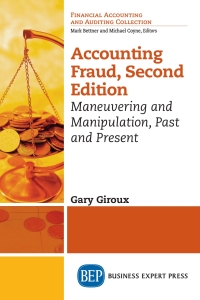



Warnerwoods Company uses a periodic inventory system. It entered into the following purchases and sales transactions for March Units Sold at Retail Date Activities Mar. 1 Beginning inventory Mar. 5 Purchase Mar. 9 Sales Mar. 18 Purchase Mar. 25 Purchase Mar. 29 Sales Totals Units Acquired at Cost 100 units @ $50 per unit 400 units @ $55 per unit 120 units @ $60 per unit 200 units @ $62 per unit 420 units @ $85 per unit 160 units @ $95 per unit 580 units 820 units For specific identification, the March 9 sale consisted of 80 units from beginning inventory and 340 units from the March 5 purchase; the March 29 sale consisted of 40 units from the March 18 purchase and 120 units from the March 25 purchase. 3. Compute the cost assigned to ending inventory using (a) FIFO, (b) LIFO, (c) weighted average, and (d) specific identification. (Round your average cost per unit to 2 decimal places.) a) Periodic FIFO Cost of Goods Sold Ending Inventory Cost of Goods Available for Sale Cost of Goods # of units Cost per unit Available for Sale 100 $ 50.00 $ 5,000 # of units sold Cost per unit Cost of # of units Goods in ending Cost per unit Sold inventory Ending Inventory $ 0 0.00 $ 0 55.00 55.00 100 $ 55.00 Beginning inventory Purchases: March 5 March 18 March 25 Total 400 $ 120 $ 200 $ 818 $ $ 4,400 4,800 5,500 0 60.00 60.00 22,000 7,200 12,400 $ 46,600 62.00 0 0 0 820 160 $ 9,200 100 $ 5,500 b) Periodic LIFO Cost of Goods Sold Ending Inventory Cost of Goods Available for Sale Cost of # of units Cost per unit Goods Available for Sale 100 $ 50.00 $ 5,000 # of units sold Cost per unit Cost of Goods Sold # of units in ending Cost per unit inventory Ending Inventory 0 100 $ 50.00 $ 5,000 Beginning inventory Purchases: March 5 March 18 March 25 55.00 22,000 260 55.00 140 $ 55.00 7,700 400 $ 120 $ 200 $ 60.00 120 $ $ $ 60.00 0 7,200 12,400 $ 46,600 14,300 7,200 12,400 $ 33,900 62.00 200 62.00 0 Total 820 580 240 $ 12,700 c) Average Cost Cost of Goods Sold Ending Inventory Cost of Goods Available for Sale Cost of Goods Average # of units Cost per unit Available for Sale 100 $ 5,000 # of units Average Cost sold per Unit Cost of Goods Sold # of units in ending Average Cost Ending Inventory per unit inventory 400 Beginning inventory Purchases: March 5 March 18 March 25 Total 120 22,000 7,200 12,400 $ 46,600 200 820 $ 0 $ 0 d) Specific Identification Cost of Goods Sold Ending Inventory Cost of Goods Available for Sale Cost of # of units Cost per unit Goods Available for Sale 100 $ 50.00 $ 5,000 # of units sold Cost per unit Cost of Goods Sold # of units in ending Cost per unit Ending Inventory inventory 20 $ 50.00 $ 1,000 80 50.00 4,000 400 55.00 340 $ 55.00 60 $ 55.00 Beginning inventory Purchases: March 5 March 18 March 25 Total 120 $ $ $ 60.00 40 $ 60.00 80 60.00 22,000 7,200 12,400 $ 46,600 18,700 2,400 7,440 $ 32,540 $ $ 3,300 4,800 4,960 $ 14,060 200 62.00 120 $ 62.00 80 62.00 820 580 240 4. Compute gross profit earned by the company for each of the four costing methods. (Round your average cost per unit to 2 decimal places and final answers to nearest whole dollar.) LIFO Sales Less: Cost of goods sold Gross profit FIFO $ 50,900.00 $ 50,900.00 $ 31,800.00 $ 19,100.00 $ 50,900.00 $ Weighted Specific Average Identification 50,900.00 $ 50,900.00 32,540.00 50,900.00 $ 18,360.00










